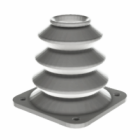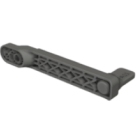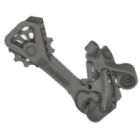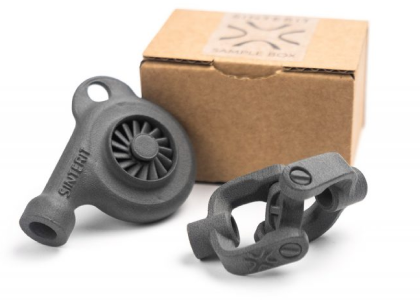Overview of 3D printing tech
3D printing, or additive manufacturing, includes several distinct technologies — each with unique mechanisms, materials, strengths, and limitations. Choosing the right method depends on your specific application: prototyping, production, precision, cost, or material performance. Below are the core 3D printing methods used in today’s industry, research, and education.
- SLS uses a high-powered laser to fuse particles of powdered material (usually nylon) together, building the part within a bed of powder.
- FDM is the most widely adopted 3D printing method, especially for entry-level and prototyping use. It works by extruding a thermoplastic filament through a heated nozzle, depositing material layer by layer onto a build plate.
- SLA, and related resin-based methods like DLP and MSLA, use light (typically UV lasers or LCD screens) to cure liquid photopolymer resin layer by layer.
- MJF (Multi Jet Fusion) is a powder-based technology from HP that offers faster print speeds and better surface quality than SLS.
- DLP is a resin-based 3D printing method similar to SLA, but instead of tracing each layer with a laser, it uses a digital light projector to cure an entire layer simultaneously. This makes it significantly faster for small to medium-sized prints.
- DMLS / SLM are metal 3D printing methods that use lasers to create fully dense, high-strength metal parts.
- Binder Jetting builds objects by depositing a liquid binder onto a powder bed, suitable for metals, ceramics, and sand-based applications.
- Material Jetting works by depositing tiny droplets of material layer by layer, which are then cured with UV light. It’s conceptually similar to 2D inkjet printing, but in three dimensions and with functional materials.
- PolyJet is a type of material jetting technology developed by Stratasys. It sprays multiple photopolymer materials onto the build platform and cures them with UV light, allowing for multi-material and multi-color parts in a single print.
Choosing the right method
Each 3D printing method serves a different purpose. Some excel at detail, others at strength or scalability. Understanding these core processes is essential for making informed decisions — whether you’re printing a prototype, a production-grade part, or a functional tool.
The best method is the one that aligns with your performance needs, material requirements, and budget — and this overview is your first step toward finding it.
Compare the most popular methods.
| Parameter | Fused Deposition Modeling | Stereolitography | Selective Laser Sintering | Selective Laser Melting |
|---|---|---|---|---|
| Abbreviation | FDM | SLA | SLS | SLM |
| Operation principle | Extrusion of melted filament | UV curing | Laser sintering | Laser melting |
| Material printed | Thermoplastic polymer in the form of string (filament) i.e. PLA, ABS | Resins/photocurable liquid materials | Powdered sinterable polymers (i.e polyamides, TPU, TPE) | Various metal alloys |
| Advantages | low costfast printing time | high print resolutionhigh process automatization | no support structurequality prototypingmovable parts | printouts durability |
| Disadvantages | need of support structuresthermal shrinkage of filament | narrow material varietyhigh maintenance costs | long printing time | high cost |
| Applications | fast prototypingeducationlow volume production | complex internal geometry prototypesdental models | educationfunctional prototypesmedical modelsprototyping moveable parts | automotive and aviation industryfunctional parts |
| Layer thickness | 0.1 – 0.3 mm | 0.05 – 0.15 mm | 0.060 – 0.15 mm | 0.02 – 0.1 mm |
| Printing without support structures | no | not always necessary | yes | not always necessary |
| Printing objects with movable parts | not always achievable (lower precision) | no | yes | no |
Explore also
- What is SLS printing?
- What is FDM 3D printing?
- What is SLA 3D printing?
- MJF 3D printing
- DLP 3D printing
- What is DMLS and SLM 3D printing?
- Binder Jetting
- Material Jetting
- PolyJet printing
- New 3D printing technology
- 3D print vs injection molding
Related categories













